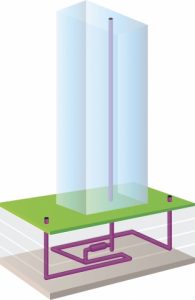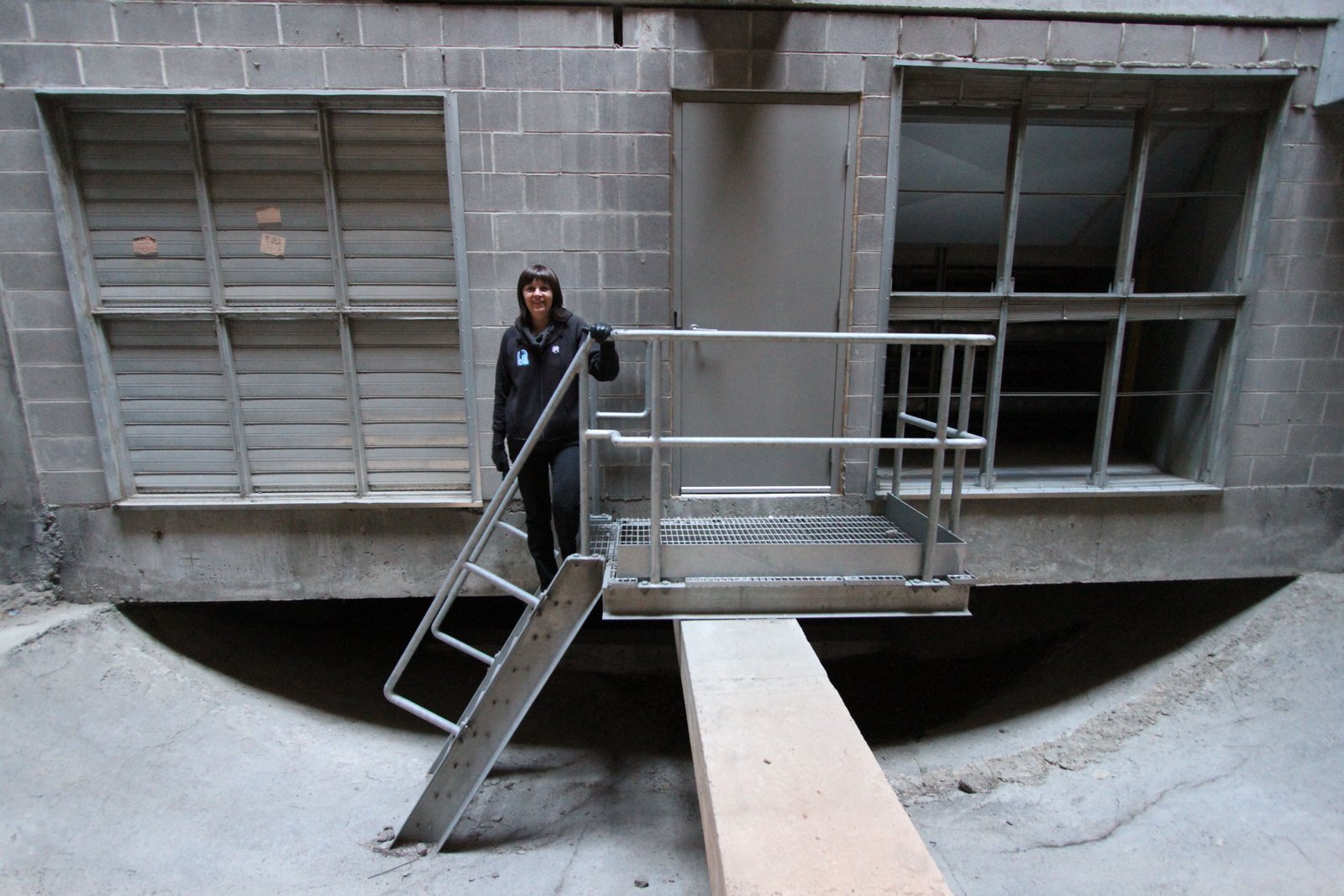By David Dodge and Duncan Kinney
Geothermal energy isn’t just about Iceland, volcanoes, lava and journeys to the centre of the earth. The vast majority of geothermal projects aren’t about tapping the fiery, red-hot core of the earth, but taking advantage of the relatively constant temperature of the ground below the frost line. The ground beneath our feet is as constant as death or taxes; it’s almost always between four to six degrees Celsius.
It isn’t sexy, but it’s effective. And while the majority of the geothermal projects today are geo-exchange ground source heat pumps, today we’re talking about the amazing earth tube.
What the heck is an earth tube?
Also called an earth to air heat exchanger it’s a set of plastic or concrete pipes that are buried underground and draw air into the building. The air flows through the earth tube and it is warmed or cooled by the ground’s constant temperature of about six degrees. The longer the earth tube the more energy transfer you get.
Six degrees doesn’t sound like a lot, but when you’re sweating through your shirt on a plus 30-degree day it makes a big difference.
According to Chorna when plus 30-degree air runs through the earth tube it is cooled by the earth to 23 or 24 degrees saving tons of energy on air conditioning. And don’t discount the effect of pre-heating minus 20-degree air in the winter either. Using an earth tube means giving your heating and cooling systems a big boost from free cooling or heating.
According to architect and University of Calgary professor Tang Lee earth tubes can save you up to half of your ventilation heating costs.
“To me it’s a very simple, logical thing to do. Since we need the fresh air why not pre-heat it using the earth to do it. All it is, is a simple tube in the ground,” says Lee.
Earth tubes are a passive, relatively low cost way of reducing your energy bills. The only energy needed is to power a blower fan to move the air from the earth tube into the building. They require very little maintenance, and while they have not been used much in Canada they are more popular in Europe, especially Germany.
The major cost associated with earth tubes isn’t even necessarily the pipes, it’s digging the trench. Lee says that it’s best to install earth tubes during the construction period of a building when you’re going to have a trencher on site anyways.
Earth tubes in action

A rendering of the Epcor Tower’s earth tube system. Image courtesy of Aecom
The Epcor Tower is a 29-storey office building in downtown Edmonton that opened in 2011 and it has a large, impressive earth tube system.
Standing just outside the front doors of the Epcor tower Tetyana Chorna, the facilities manager, points to a large grill right next to the front doors. That, she says, is the fresh air intake for the earth tube.
As we headed to the bottom level of the parkade and through a heavy door we entered a rectangular, non-descript concrete room. As I looked up I could see the grate by the entrance about 100 feet above us. Air streams down this concrete plenum at a rate of 19,000 litres per second, and then turns 90-degrees and runs through two long, concrete earth tubes that run under the parkade.
The two tubes are 116 meters and 97 meters long and according to a white paper written by Jillian Pederson, the mechanical designer of the project, the earth tubes save more than $50,000 in energy costs a year.
Tang Lee is working on an earth tube project right now, a retrofit of the McKernan Community League Hall. And while retrofits typically aren’t ideal for earth tubes, they’re making it work on this project.
Lee has worked on roughly 40 earth tube projects in the last 25 years in western Canada and it has been a bit of an uphill battle at times.
Lee sees a real lack of support in research on earth tubes in Canada.
“That’s a problem; the government finds us too simple. If I was going to get a research grant for a nuclear plant I could get a couple billion dollars. CO2 sequestration, there’s lots of money for that. For something as simple as this it just isn’t on the radar. It’s not sexy enough, it’s just too simple.”
That’s ironic considering the quick paybacks for earth tubes. And thanks to projects like the Epcor Tower and McKernan Community League and increasing comfort that engineers are acquiring with this technology we just might start seeing more of the amazing earth tube.
[flickrshow:72157637949600323,width=625]

